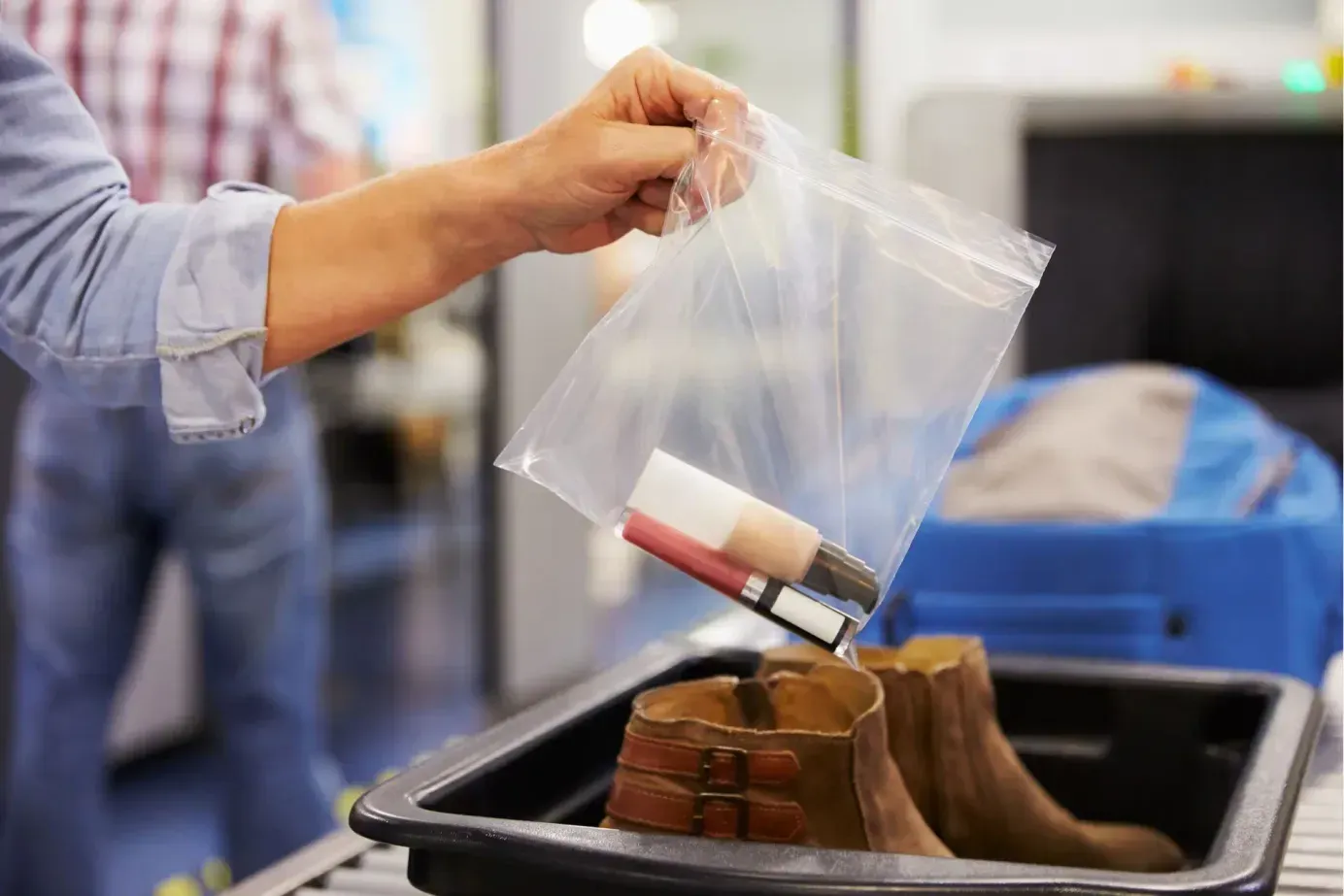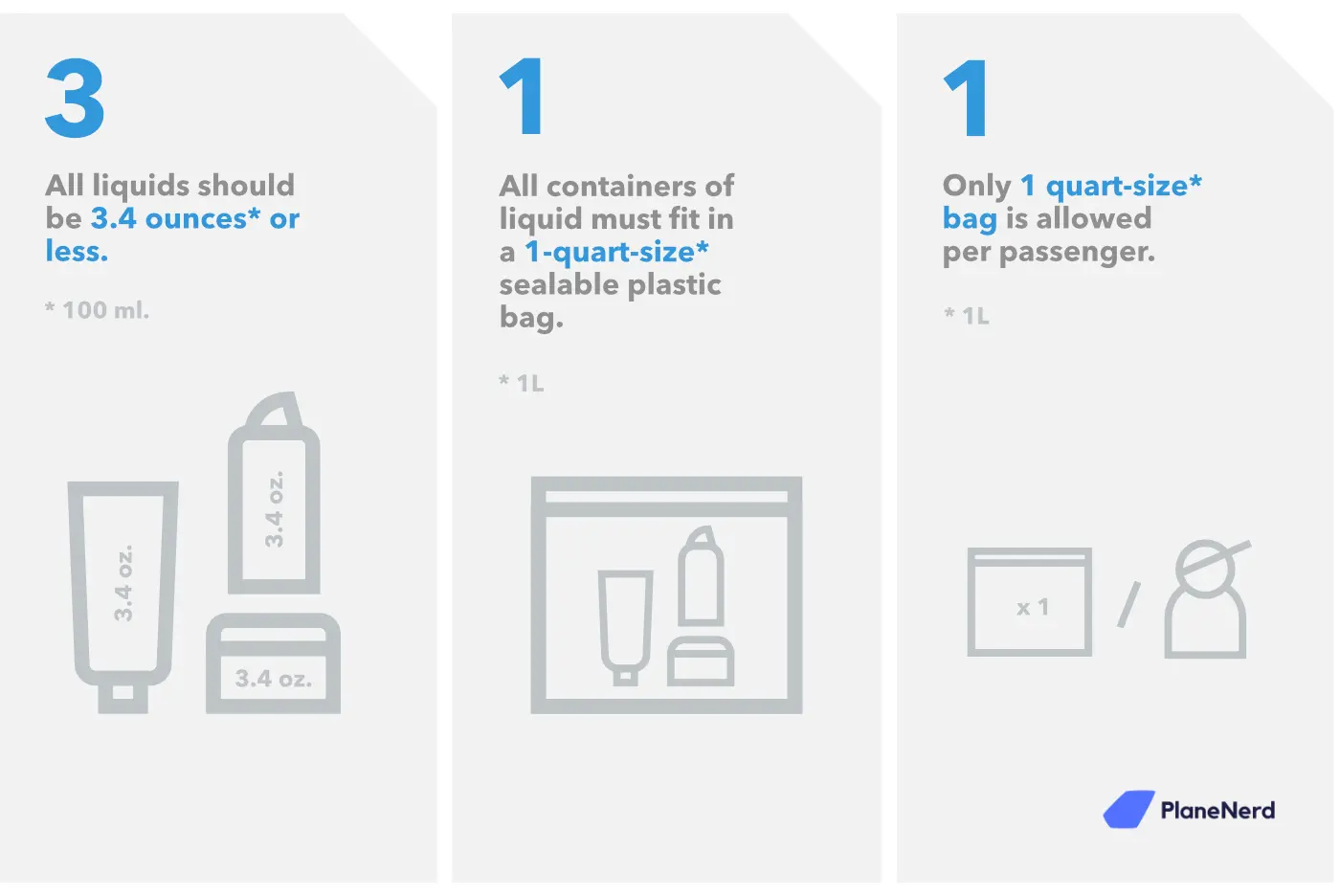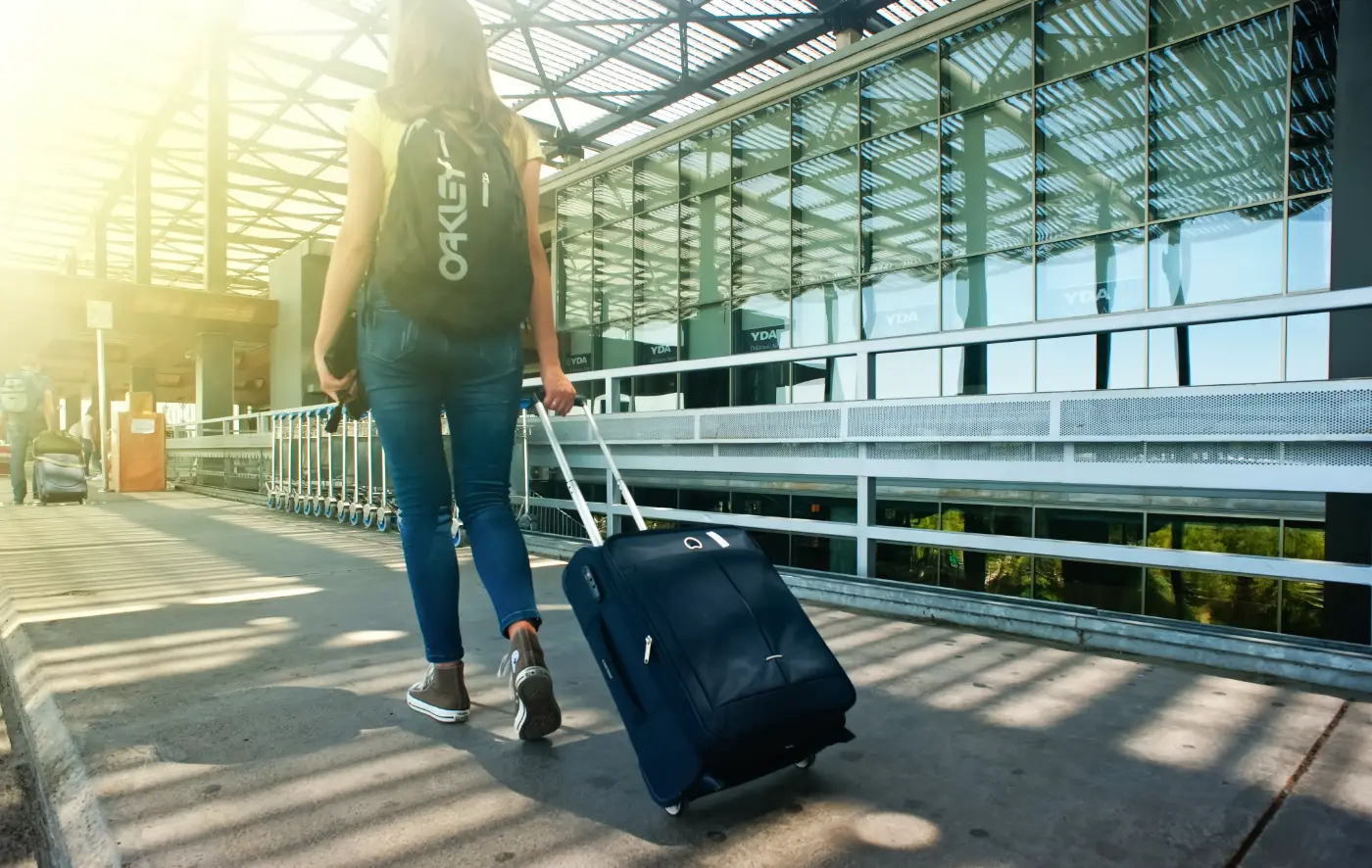
Liquid On An Airplane: Everything You Need To Know
Some liquids may be allowed in your carry-on on a flight. But strict rules limit how much you can bring. Here's everything you need to know.
Table of Contents
Travel can be stressful at the best of times. The last thing you need is to get pulled aside by security because you forgot about the tube of toothpaste that you've packed into your carry-on luggage.
When you board an airplane, you're allowed to carry a quart-sized (one liter) bag of liquids that are limited to containers that are 100ml or less each, and you'll need to remove these items during the security screening process. You may carry more than one container of liquid, but no more than what fits in one resealable plastic quart-sized (one liter) bag. Each person is only allowed to bring one of these bags.
Continue reading for a comprehensive guide to carrying liquids on an airplane. Discover what's classed as a liquid, how much liquid you can bring, and why these rules exist.
What Are The Rules Of Liquids On An Airplane In a Carry-On And Checked-In Luggage?
The liquids rule applies to all liquids, gels, creams, aerosols, or pastes.
The only exceptions to these rules are medications of nourishments for infants and children. Security personnel will need to screen these at the security checkpoint at the airport.
In addition, you can carry duty-free items that you have purchased internationally if you are traveling to the USA via a connecting flight. You should package these liquids in a secure, transparent bag with no signs of tampering. You must have made the purchases within the last 48 hours, and you'll need to show your receipt as proof of purchase.
Any items that do not clear screening will not be allowed onto the flight, so it's best to keep all liquids in your checked-in baggage (even those in secure packaging) unless you must have them on your person. This prevents you from having any items confiscated.
What Is The 3-1-1 Rule?
The 3-1-1 rule is a simple way to remember the liquids rule for airplane travel.
3 - No more than 3.4 ounces (100 ml.) of any individual liquid is allowed in your carry-on luggage.
1 - All liquids, gels, pastes, creams, and aerosols must fit into one bag.
1 - Only one clear quart-sized (one liter) bag is permitted per passenger.

What Is Considered Liquid, And How Much Can I Bring?
The TSA - or Transportation Security Administration - classifies a liquid as gels, pastes, creams, or aerosols. That means that many items, from toothpaste to peanut butter, fall into the "liquids" category and are subject to screening.
Typical items included in the TSA's definition of a liquid include the following.
- Toothpaste
- Shampoo
- Sunscreen
- Hair gel
- Perfume
- Lipgloss
- Moisturiser
And there are numerous food items you may not consider a liquid, such as those listed below, all classified as liquids.
- Peanut butter
- Yogurt
- Jam
- Pate
- Cheese spread
As mentioned above, these items fall under the same rules: You can carry a total of one quart-sized (one liter) bag of liquid items. However, no individual item can exceed a volume of 3.4oz or 100ml - even if it's cheese spread.
However, you can bring most solid foods on an airplane.
What Are The Exceptions To The Rule When It Comes To "Liquids?"
A few exceptions to the rule include medications, baby food, and breast milk. You do not need to place these items in your ziplock bag, and they can exceed a quantity of 100ml. However, you'll need to clearly label these items, declare them, and allow them to be screened separately from your other things.
If you carry medications or baby nourishments, you'll need the appropriate medical paperwork to accompany them.
If these items need ice or gel packs to maintain their state, the TSA can approve this, but again, you'll need to label, declare them, and have them pass the screening process.
Due to the coronavirus pandemic, you can now carry a separate container of hand sanitizer with a maximum volume of 12 ounces in your hand luggage.
Ultimately, the security officer decides whether or not you can carry any liquid items in your carry-on luggage. Keep all liquids in your checked-in baggage and only have essential fluids on your person.
Why Are These Rules There In The First Place?
If you've been traveling for the past few decades, you're bound to remember the days when you could freely carry a water bottle and some suncream onto the plane without any hassle. So why did these rules change, and what's the point of the 3-1-1 liquid rule?
In 2006, three terrorists came up with a plot to blow up as many as ten transatlantic flights from the UK to the USA using liquid bombs disguised in soft drinks bottles. This plan would allow them to pass through screening procedures, mix the bombs during the flight, and then detonate them on board in a suicide mission.
This would have resulted in a catastrophic loss of life were it not for an extensive surveillance operation carried out by the British police, who uncovered the plot and arrested several suspects on terrorism charges before they got too far with their plans.
All liquids were banned in the aftermath of these events (except for baby milk), and passengers could only purchase beverages after passing the security checkpoints.
Further testing and evaluation revealed that a person would need a container of a certain size to make an effective explosive device. The items that will fit into a single-quart bag do not possess the critical amount or size to pose a risk.
That's why it's not only the amount of liquid but the size of the container that is part of today's security measures. The 3-1-1 rule allows people to take measured amounts of liquids on an airplane. Still, it is restricted enough to significantly reduce the possibility of anyone being able to create an explosive device.
Are The Rules The Same All Over The World?
Any flight to or from the USA - including domestic or international travel - must abide by the 3-1-1 rule. The only exception to the rule is duty-free items purchased within 48 hours of travel that are held in secure packaging and which you have proof of purchase for.
Around the world, many countries have adopted the 3-1-1 rule, including The UK, Members of the European Union, New Zealand, Australia, Canada, Mexico, China, and South Korea.
In addition, the TSA protects international travelers by ensuring that foreign airline employees receive adequate training to conform to TSA standards and ensure that they enforce them properly.

Final Thoughts.
The 3-1-1 rule tells you everything you need to know about carrying liquids onto an airplane - no more than 3.4oz (100 ml.) in one clear quart-sized (one liter) bag per person. And anything that is a liquid, gel, or pastes in texture is classed as a liquid.
The TSA has implemented the measures for the safety of all travelers. With a bit of preparation ahead of time, you can still pack the essentials and leave your worries behind. And you are still allowed to bring food on board.
Planenerd Newsletter
Join the newsletter to receive the latest updates in your inbox.






